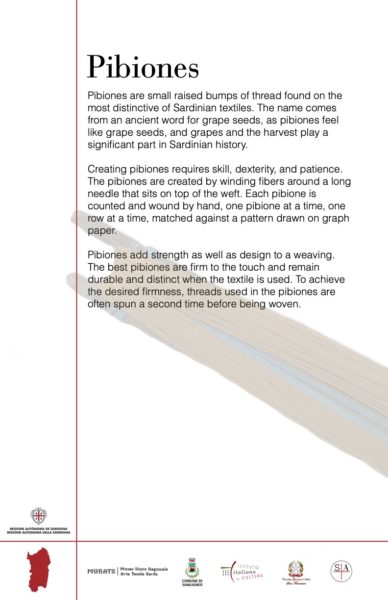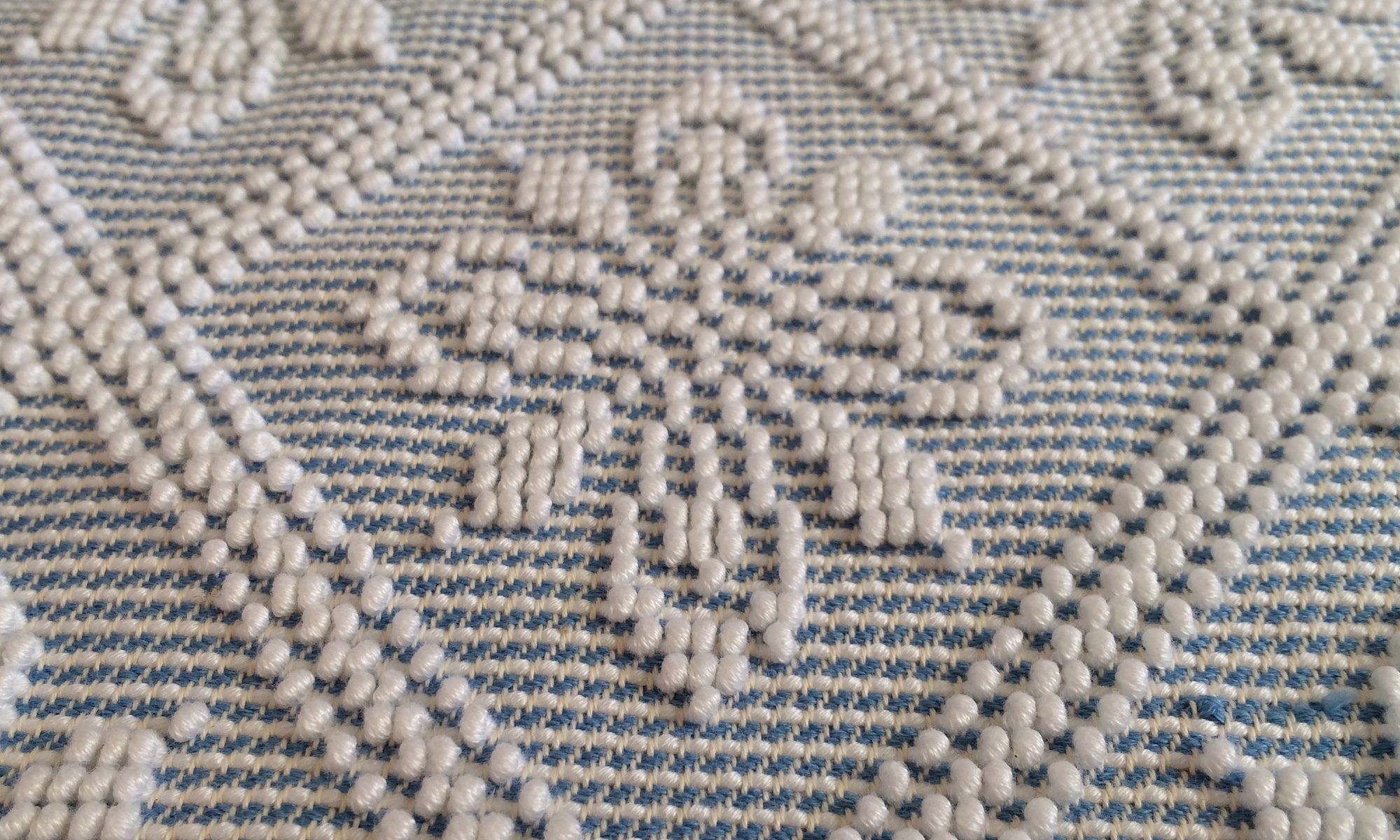This is one of the educational posters from Sardinian Textiles: An Exhibit of Handwoven Art, held at the Italian Cultural Center – San Francisco in 2017. The text is first, followed by the poster.
There’s certainly much more to discuss about this topic — and I expand greatly on this during my live presentations and in articles you’ll find on this site and elsewhere. Sign up for the newsletter to stay connected!
Pibiones are small raised bumps of thread found on the most distinctive of Sardinian textiles. The name comes from an ancient word for grapes, as pibiones feel like grapes, and grapes and the harvest play a significant part in Sardinian history.
Creating pibiones requires skill, dexterity, and patience. The pibiones are created by winding fibers around a long needle that sits on top of the weft. Each pibione is counted and wound by hand, one pibione at a time, one row at a time, matched against a pattern drawn on graph paper.
Pibiones add strength as well as design to a weaving. The best pibiones are firm to the touch and remain durable and distinct when the textile is used. To achieve the desired firmness, threads used in the pibiones are often spun a second time before being woven.

© 2013 – 2025 Kelly Manjula Koza | All Rights Reserved

